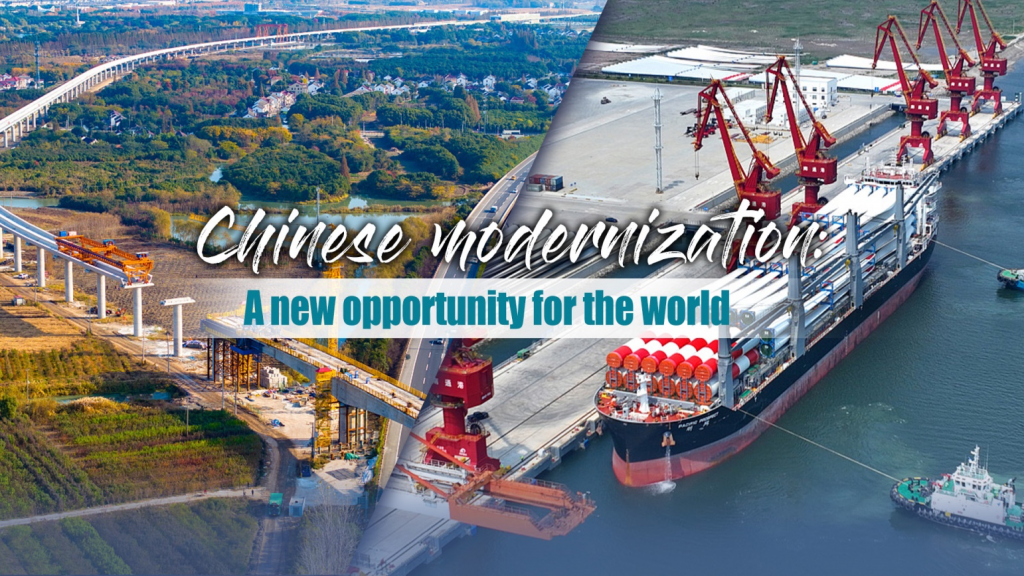Published: December 14,2023
By Zafar Uddin Mahmood

Editor’s note: The modernization China seeks involves a massive population base and a rapid pace of realization. It could be seen as a super-scale human development practice. What is the difference between Chinese and Western modernization? Will Chinese modernization offer another global model for development? Zafar Uddin Mahmood, the former special envoy of the China-Pakistan Economic Corridor, shared his thoughts during the Understanding China Conference hosted by the China Institute for Innovation and Development Strategy.
The most striking feature of Chinese modernization is its inclusiveness. Everyone joins in the drive. It’s not a policy that was only set out and implemented by the government. Actually, everyone in China understands that modernization will bring many benefits for the people and for the country. And everyone participates in that development process. The bottom line is to make China a strong and prosperous country. This goal has to be achieved through inclusiveness, by everyone participating in the development.
Chinese modernization is the modernization of peaceful development, which helps create a better future for all mankind. The country aims to broaden its development space with high-standard opening-up and deeper integration into the global industrial division and cooperation, which makes Chinese modernization a new opportunity for the world.
The Belt and Road Initiative (BRI), proposed by China about a decade ago, has made interconnections among more regions a reality, and benefited the people of more countries.
So here is an example of how a country can benefit from China’s pursuit of modernization. I was involved in a BRI project in Pakistan called the China-Pakistan Economic Corridor (CPEC). I was appointed by the Pakistan Embassy in China as a special envoy only to deal with this initiative.
In 2013, we were facing an acute shortage of electricity. Sometimes even in major cities, there were power outages for 12 consecutive hours. Public life was seriously affected, and industrial production was even more hindered. Therefore, the development of the energy industry naturally became the top priority of the Pakistani government. After consulting with the Chinese side, we reached an agreement to set up an energy project.
In just three years, we have completed communication, negotiation, contract signing, construction of various power plants, and finally the realization of power supply. The speed has been amazing. Within just three years, we solved the power shortage problem. This not only significantly improved the living standards of the people, but also greatly promoted industrial development. It’s just one of the major benefits we enjoy from the CPEC.
A ceremony is held to mark the second-stage river closure of the Suki Kinari (SK) Hydropower Project in Mansehra district, Pakistan, April 30, 2021. /Xinhua
We’ve also focused on infrastructure construction cooperation. Pakistan had planned to build a main road to connect the country from north to south, with a total length of about 1,600 kilometers. But only some sections of the road were completed, and there were still unfinished parts between them. In the three years since the launch of the CPEC, we completed the whole road network, completely connecting the two ends of Pakistan, which is also a remarkable achievement.
The first phase of the CPEC focused on energy and infrastructure construction, and then we expanded our cooperation into agriculture, health care, cultural activities and industrial development. These projects have also brought huge economic benefits. It not only creates many employment opportunities in Pakistan, but also greatly promotes industrial development. The Chinese side has not only promised to invest, but also actually completes the projects one by one and delivers them to us.
Since Chinese President Xi Jinping gave a speech in Kazakhstan in 2013 and proposed the Belt and Road Initiative (BRI), Western media began to create confusion, suspicion and objection about this initiative. In fact, the BRI fully reflects China’s willingness to share knowledge and experience, and the intention is to benefit people all over the world. The BRI has been promoted for ten years, and Western doubts have increased day by day.
I have read the reports of many institutions, including some Western institutions, and the main question is the so-called debt trap. I am sure that China’s debt makes only a very small percentage of all countries’ debts. For example, in Africa, including commercial debt and those from the World Bank and other organizations, China-related debt only accounts for about 12 percent. How can a proportion of only 12 percent form a debt trap? What about the remaining 88 percent? I can’t understand their logic.
In the past, many countries could only borrow money from the West, but now there is a second option, and the West is worried that China’s funding can also help these countries in their construction. The emergence of China has diluted the West’s monopoly on development lending, through which the West was able to dictate the terms unilaterally.
Here comes another important point. The funds provided by the West will have various restrictions. China never imposes any political conditions or tells you what to do with the money. It never says you must do or should never do a project. The projects and industries were proposed by the receiving countries according to their specific needs, not imposed by China. Therefore, the “debt trap” proposed by the West is a completely wrong concept.
cgtn.com
 Africa -China Review Africa -China Cooperation and Transformation
Africa -China Review Africa -China Cooperation and Transformation
